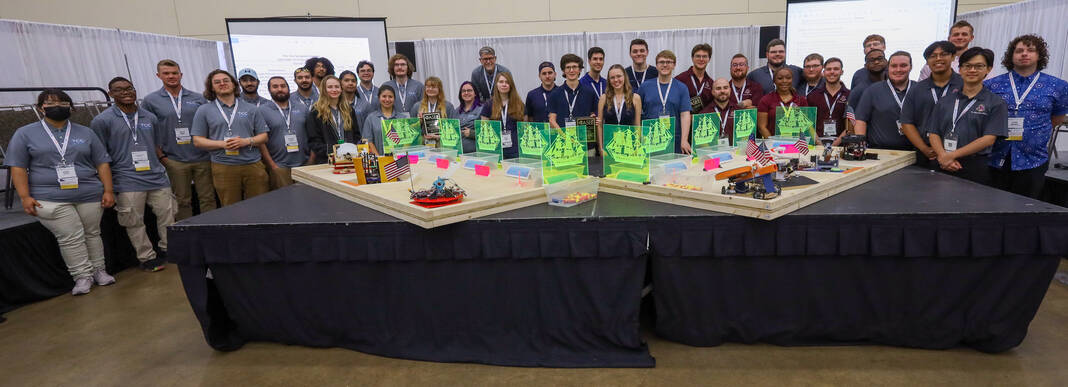
Submitted photos
Cedarville’s ASEE Robotics Team poses for a team picture. The team is comprised of 19 freshman and sophomore engineering students.

The robotics team poses for a team picture at the competition in Baltimore, Maryland. The team took home the top prize for the sixth time in its history.
CEDARVILLE — It takes a commitment to be part of Cedarville University’s robotics team that competes each year in the American Society of Engineering Education (ASEE) Robotics competition.
The reward, however, has been beneficial for many of the students since the competition began 20 years ago.
This year, 19 engineering students — all freshmen and sophomores — entered the “Star Spangled Defender” in the national competition held in June in Baltimore, Maryland, and came away with top honors. It’s the tenth time in 23 years that a Cedarville University team has won the event.
“Every fall, I recruit new freshmen and we meet every Saturday for 16 weeks in the fall and in the spring to work on our project that we’ll take to the robotics competition,” said Dr. Clint Kohl, faculty advisor. “It’s a pretty big commitment for the students, but it’s been a great learning opportunity for everyone.”
This year’s winning entry, “Star Spangled Defender,” was able to launch nerf balls into five “tall ship” containers and knock down four “row boat” assault vehicles attacking “Fort Henry.” With accuracy and time being two key elements in the competition, Cedarville’s team designed a custom-printed circuit board to house the needed electronics and provide the connections, sensors, logic and a socket for the motor controllers. This work led Cedarville to the grand prize.
Since 2001, the team has acquired ten first-place finishes, four second-place finishes and four third-place finishes.
“We usually have a team of about 12 to 20, so we break up into different responsibilities,” said Kohl. “There are the programmers who give the robot the command of what it needs to do. Our electronics work on connecting the circuitry and together, the robot supposedly functions as it was designed. This year’s performance was exceptionally good.”
The team will look to earn another first-place finish next year when the ASEE competition will be held in Portland, Oregon.

